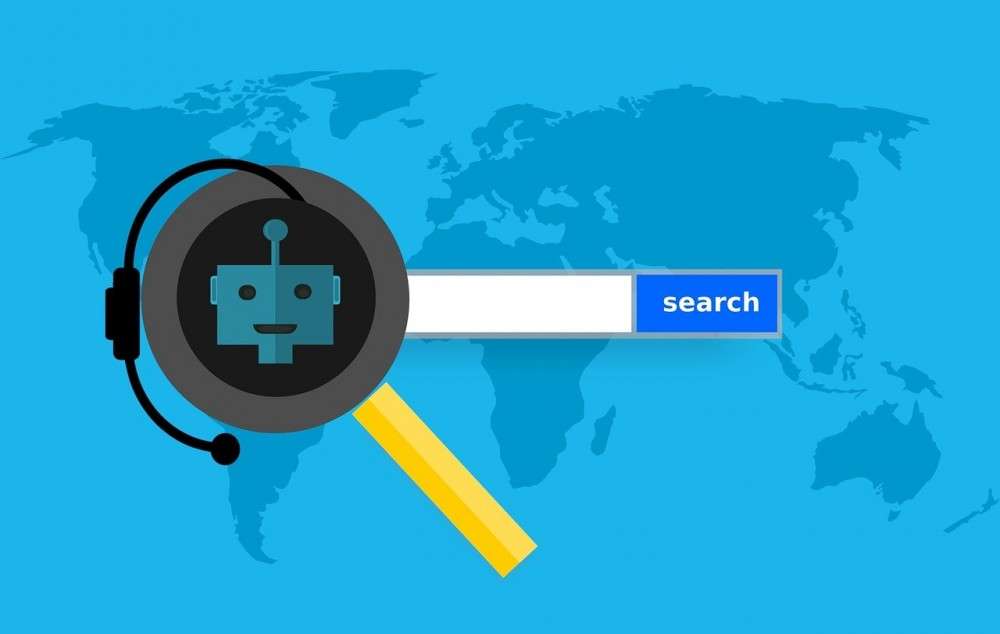In the digitally driven world we live in, businesses need to be at the top of their game to succeed. The era of traditional marketing has given way to the reign of digital marketing, and for companies to thrive, they must understand the intricacies of this dynamic landscape. Welcome to the Ultimate Guide to Digital Marketing Business, your comprehensive roadmap to navigating the ever-evolving world of digital marketing.
Before we delve into the myriad facets of digital marketing, let’s set the stage by understanding what digital marketing is and why it’s crucial for businesses in the 21st century. Digital marketing encompasses all online efforts to promote and sell products or services, utilizing an array of online channels and technologies. It’s the lifeline of modern businesses, allowing them to connect with their target audience where they spend a significant portion of their time – the internet.
1 Why Digital Marketing Matters ?
In a world where nearly half of the global population is online, digital marketing is not just an option; it’s a necessity. It offers several advantages over traditional marketing, including:
- Cost-Effectiveness: Digital marketing often costs less than traditional advertising methods like print or TV ads.
- Targeted Marketing: Precisely reach your intended audience through various online channels.
- Measurable Results: Unlike traditional marketing, digital marketing provides real-time data and analytics.
2 Getting Started with Digital Marketing
Embarking on a digital marketing journey requires a clear roadmap. Here are the initial steps:
A. Define Your Goals
Before diving into the digital realm, define your objectives. Are you looking to increase brand awareness, boost sales, or engage with your audience more effectively? Clear goals will guide your strategy.
B. Know Your Audience
Understanding your target audience is paramount. Use data and market research to create customer personas, helping you tailor your marketing efforts to their preferences and needs.
C. Choose the Right Digital Channels
Not all digital channels are created equal. Depending on your goals and audience, select the platforms that are most effective for your business. This could include social media, search engines, email, or a combination of these.
Digital Marketing Master Resell Course
Learn how to start a Digital Marketing Business and Resell this Course. Earn 100% Profit Margin. Learn the Techniques by Enrolling Below.
3 Search Engine Optimization (SEO) Strategies
SEO is the art and science of optimizing your online content to rank higher in search engine results. It’s a pivotal part of any digital marketing strategy.
A. Keyword Research
Start with in-depth keyword research to identify the terms your target audience is searching for. Tools like Google Keyword Planner can help.
B. On-Page SEO
Optimize your website’s content, meta tags, and images to ensure they are search engine-friendly. This includes using relevant keywords and improving page load times.
C. Off-Page SEO
Build quality backlinks from authoritative websites to increase your site’s credibility in the eyes of search engines.
D. Content Creation
High-quality, relevant content is the cornerstone of SEO. Regularly update your site with valuable content to keep both users and search engines engaged.
Example: Consider a local bakery in New York. By optimizing their website for keywords like “New York artisanal bakery” and creating content about the art of baking, they can attract more local customers interested in artisanal products.
| Action | Benefit |
|---|---|
| Keyword Research | Higher visibility in search results |
| On-Page SEO | Improved website performance |
| Off-Page SEO | Enhanced website credibility |
| Content Creation | Engaging and retaining your audience |
4 Content Marketing
Content marketing is all about creating and distributing valuable, relevant content to attract and engage a specific audience. It’s a subtle art that involves a variety of strategies.
A. Blogging
Regularly publishing blog posts that address the pain points of your audience can establish you as an industry authority.
B. Visual Content
From infographics to videos, visual content is incredibly engaging. Consider creating shareable, visually appealing assets.
C. Storytelling
Telling your brand’s story in a compelling way can foster a deep connection with your audience.
D. Guest Posting
Collaborate with industry influencers and write guest posts for their platforms to reach a wider audience.
Example: A fitness equipment company can create blog posts on topics like “The Benefits of Home Workouts” or “Choosing the Right Treadmill.” These informative articles can attract fitness enthusiasts seeking advice.
| Strategy | Advantage |
|---|---|
| Blogging | Establish authority in the industry |
| Visual Content | High engagement and shareability |
| Storytelling | Emotional connection with audience |
| Guest Posting | Extended reach and credibility |
5 Social Media Marketing
Social media is a potent tool for connecting with your audience and boosting brand awareness.
A. Choose the Right Platforms
Not all social media platforms are suitable for every business. Determine where your audience is most active and focus your efforts there.
B. Content Planning
Develop a content calendar to maintain a consistent posting schedule. Use a mix of content types, from images and videos to text-based posts.
C. Engage with Your Audience
Respond to comments, messages, and mentions promptly. This fosters a sense of community and trust.
Example: A fashion brand targeting young adults might thrive on Instagram and TikTok, where visual content and trends play a significant role.
| Action | Benefit |
|---|---|
| Platform Selection | Effective audience targeting |
| Content Planning | Consistent brand presence |
| Audience Engagement | Building trust and community |
6 Email Marketing
Despite the rise of new marketing channels, email marketing remains a highly effective way to reach and engage with your audience.
A. Build an Email List
Start by gathering email addresses from your customers and website visitors. Offer incentives like discounts or free resources to encourage sign-ups.
B. Personalization
Segment your email list to send targeted content to different groups of subscribers. Personalized emails have higher open and click-through rates.
C. A/B Testing
Experiment with different subject lines, content, and sending times to optimize your email campaigns.
Example: An online bookstore can use email marketing to send personalized book recommendations to readers based on their previous purchases.
| Action | Advantage |
|---|---|
| Email List Building | Direct communication with your audience |
| Personalization | Higher engagement and conversion rates |
| A/B Testing | Improved email campaign performance |
7 Pay-Per-Click (PPC) Advertising
PPC advertising allows you to display ads on search engines and other platforms, paying only when a user clicks on your ad.

A. Keyword Research
Similar to SEO, effective PPC campaigns begin with keyword research. Identify the most relevant and cost-effective keywords for your ads.
B. Ad Copywriting
Craft compelling ad copy that not only attracts clicks but also leads to conversions.
C. Landing Page Optimization
Ensure your landing pages are well-optimized to provide a seamless experience for visitors, increasing the likelihood of conversions.
Example: An online shoe store can use PPC advertising to target users searching for “running shoes” on Google. Their ad can appear at the top of search results, driving potential customers to their website.
| Step | Benefit |
|---|---|
| Keyword Research | Cost-effective ad targeting |
| Ad Copywriting | Attracting clicks and potential customers |
| Landing Page Optimization | Enhanced conversion rates |
8 Influencer Marketing
Influencer marketing involves collaborating with individuals who have a significant online following to promote your products or services.
A. Identify Relevant Influencers
Choose influencers whose values and audience align with your brand. Their endorsement should be authentic.
B. Set Clear Expectations
Clearly define the scope of the partnership, including content creation, posting schedule, and compensation.
C. Measure Impact
Track the results of your influencer marketing campaigns. Metrics like engagement, reach, and conversion rates provide valuable insights.
Example: A tech company partnering with a well-known tech YouTuber to review their latest product can tap into the influencer’s dedicated audience and boost product visibility.
| Action | Advantage |
|---|---|
| Influencer Selection | Targeted promotion to a specific audience |
| Clear Expectations | Effective campaign execution |
| Performance Tracking | Measuring ROI and campaign success |
9 Analytics and Data Insights
Data-driven decision-making is at the heart of successful digital marketing.
A. Data Collection
Gather data from various sources, including your website, social media, and email campaigns.
B. Analyze Metrics
Identify key performance indicators (KPIs) relevant to your goals. This could include website traffic, conversion rates, or social media engagement.
C. Optimization
Use data insights to refine your marketing strategies. A/B testing, for instance, can help you fine-tune your campaigns for better results.
Example: An online marketplace can analyze website data to discover that a significant portion of their customers are coming from mobile devices. This insight prompts them to optimize their website for mobile users, resulting in increased sales.
| Step | Advantage |
|---|---|
| Data Collection | Informed decision-making |
| Metric Analysis | Measuring campaign effectiveness |
| Optimization | Continuous improvement and better results |
10 E-commerce Marketing
For businesses in the e-commerce sector, effective marketing is vital.
A. Product Listings Optimization
Optimize your product listings with clear descriptions, high-quality images, and customer reviews.
B. Shopping Ads
Utilize platforms like Google Shopping to showcase your products to users actively searching for them.
C. Cart Abandonment Strategies
Implement strategies to reduce cart abandonment rates, such as reminder emails or exit-intent pop-ups.
Example: An online fashion retailer can use high-quality images, detailed product descriptions, and customer reviews to enhance their product listings, increasing sales.
| Strategy | Benefit |
|---|---|
| Product Optimization | Enhanced user experience and trust |
| Shopping Ads | Visibility to users ready to make a purchase |
| Cart Abandonment Strategies | Recover potential sales |
11 Mobile Marketing
Given the prevalence of smartphones, mobile marketing is essential for reaching a broad audience.
A. Mobile-Friendly Website
Ensure your website is responsive and mobile-friendly, as a significant portion of users access sites via mobile devices.
B. Mobile Apps
Consider developing a mobile app to engage with customers directly and provide a more personalized experience.
C. SMS Marketing
Leverage text messaging for promotions, updates, and reminders, but do so sparingly to avoid overwhelming customers.
Example: A restaurant can benefit from mobile marketing by offering an easy-to-navigate mobile website, an app for ordering, and occasional SMS offers to loyal customers.
| Action | Advantage |
|---|---|
| Mobile-Friendly Website | Improved user experience and accessibility |
| Mobile Apps | Direct customer engagement and loyalty |
| SMS Marketing | Timely communication with customers |
12 Content Personalization
In an age of information overload, personalization is key to cutting through the noise.
A. Customer Data Gathering
Collect and analyze data to understand your customers’ preferences and behavior.
B. Personalized Content
Tailor your content and marketing messages to individual customers based on their data.
C. Recommendation Engines
Implement recommendation engines to suggest products or content that align with a user’s previous interactions.
Digital Marketing Master Resell Course
Learn how to start a Digital Marketing Business and Resell this Course. Earn 100% Profit Margin. Learn the Techniques by Enrolling Below.
Example: An online streaming platform like Netflix uses customer data to recommend movies and TV shows that match a user’s viewing history.
| Step | Advantage |
|---|---|
| Data Gathering | Enhanced understanding of customer behavior |
| Personalized Content | Increased engagement and conversion rates |
| Recommendation Engines | Improved user experience and loyalty |
13 Video Marketing
Video has emerged as one of the most engaging forms of content on the internet.
A. Video Creation
Produce high-quality videos that align with your brand and engage your audience.
B. Video SEO
Optimize your video content for search engines to increase its discoverability.
C. Live Streaming
Leverage live streaming on platforms like Facebook and YouTube to interact with your audience in real time.
Example: A cooking school can use video marketing to create recipe tutorials, cooking tips, and even live sessions with chefs to attract a food-loving audience.
| Action | Benefit |
|---|---|
| Video Creation | High engagement and brand recognition |
| Video SEO | Increased visibility in search results |
| Live Streaming | Real-time audience interaction |
14 Marketing Automation
Streamline your marketing efforts by automating repetitive tasks.
A. Email Automation
Automate email campaigns for personalized and timely communication.
B. Social Media Scheduling
Use tools like Hootsuite or Buffer to schedule posts and maintain a consistent social media presence.
C. CRM Integration
Integrate customer relationship management (CRM) systems to manage leads and customer data efficiently.
Example: An e-commerce store can use marketing automation to send follow-up emails to customers who abandoned their shopping carts, encouraging them to complete their purchase.
| Strategy | Advantage |
|---|---|
| Email Automation | Timely and personalized communication |
| Social Media Scheduling | Consistent brand presence |
| CRM Integration | Efficient lead and customer management |
15 Affiliate Marketing
Collaborate with affiliates to promote your products or services and earn commissions on sales.
A. Partner Selection
Choose affiliates who are relevant to your industry and share your target audience.
B. Clear Terms and Compensation
Clearly define the terms of your affiliate program, including commission rates and payment schedules.
C. Affiliate Tracking
Use tracking software to monitor affiliate-generated sales and ensure accurate commission payouts.
Example: An online beauty store can partner with beauty bloggers and YouTubers who review and promote their products, earning a commission on sales generated through their affiliate links.
| Action | Advantage |
|---|---|
| Partner Selection | Targeted promotion through affiliates |
| Clear Terms | Transparent and efficient partnership |
| Affiliate Tracking | Accurate commission payouts |
16 Voice Search Optimization
With the rise of voice-activated devices, optimizing for voice search is becoming essential.

A. Natural Language Keywords
Use long-tail, conversational keywords that mirror how people speak when using voice search.
B. Structured Data Markup
Implement structured data to provide search engines with context about your content.
C. Mobile Optimization
Since voice searches often occur on mobile devices, ensure your website is mobile-friendly.
Example: A local pizza restaurant can optimize for voice search by incorporating phrases like “Where can I find the best pizza near me?” into their website content.
| Step | Advantage |
|---|---|
| Natural Language Keywords | Improved visibility in voice search |
| Structured Data Markup | Enhanced understanding by search engines |
| Mobile Optimization | Better user experience for mobile users |
17 Customer Journey Mapping
Understanding the customer journey helps tailor your marketing efforts effectively.
A. Customer Research
Gather data and feedback to comprehend the stages and touchpoints in the customer journey.
B. Persona Development
Create customer personas to represent different segments of your audience.
C. Content Mapping
Align your content with each stage of the customer journey, from awareness to conversion.
Example: An online travel agency can map the customer journey from the initial dream of a vacation through the research and booking phases, ultimately leading to the trip itself.
| Action | Benefit |
|---|---|
| Customer Research | Informed marketing strategies |
| Persona Development | Targeted content creation |
| Content Mapping | Effective engagement throughout the journey |
18 Brand Building and Reputation Management
A strong brand and a positive reputation are assets that digital marketing can help build and protect.
A. Consistent Branding
Maintain a consistent brand image and messaging across all digital channels.
B. Online Reputation Monitoring
Use tools to keep track of online mentions and reviews to address any issues promptly.
C. Reputation Enhancement
Encourage satisfied customers to leave positive reviews and testimonials.
Example: An online tech company can build its brand by consistently using the same logo, colors, and messaging across its website and social media profiles.
| Strategy | Benefit |
|---|---|
| Consistent Branding | Recognition and trust in the market |
| Reputation Monitoring | Timely issue resolution and customer satisfaction |
| Reputation Enhancement | Enhanced credibility and trust |
Explore more Online Certification Courses here
Conclusion
In the digital age, marketing has evolved into a complex and multifaceted discipline. Businesses that embrace the opportunities and challenges of digital marketing can thrive in this dynamic landscape. From SEO and content marketing to social media, email campaigns, and influencer partnerships, the tools and strategies at your disposal are diverse and powerful.
As you embark on your digital marketing journey, remember that success is not achieved overnight. It requires ongoing learning, adaptation, and a commitment to staying current with the ever-changing digital landscape. With the right strategies, data-driven decisions, and a focus on providing value to your audience, you can build a strong online presence and grow your business in the digital era.












